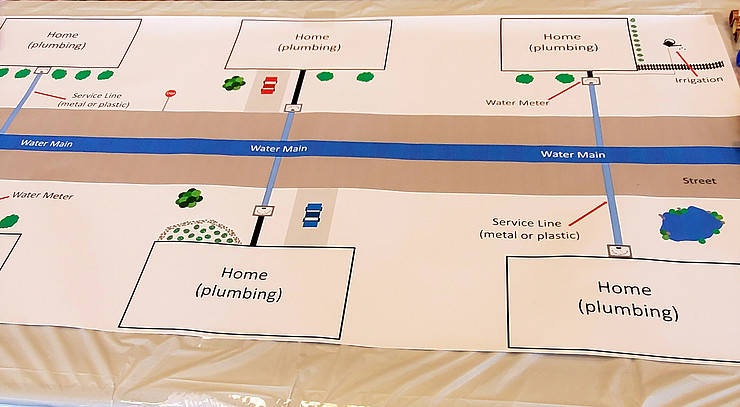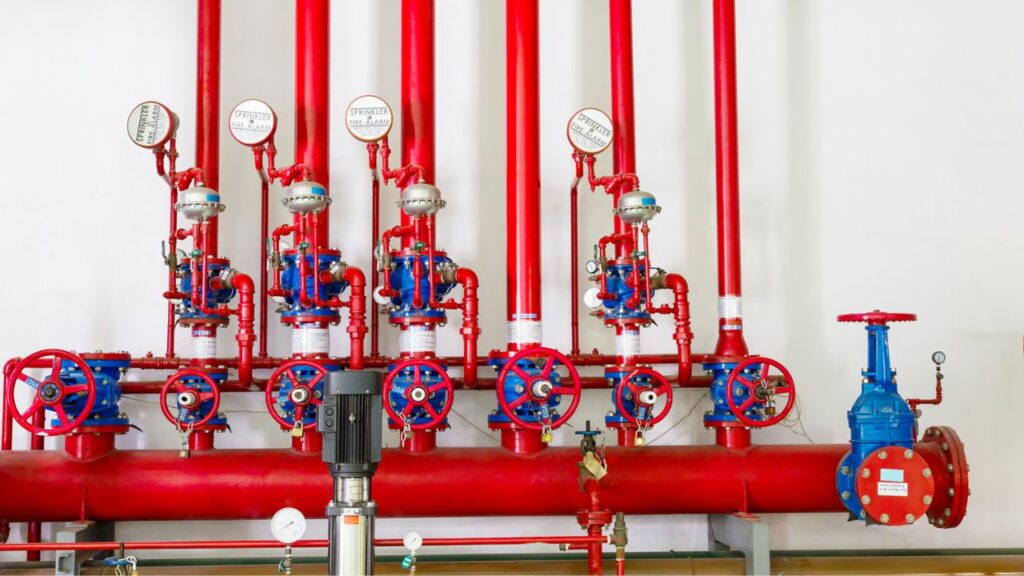How The Anatomy of Your Home's Plumbing System Matters
How The Anatomy of Your Home's Plumbing System Matters
Blog Article
What are your beliefs about Anatomy of a House: Understanding the Components?

Comprehending just how your home's pipes system works is essential for every house owner. From delivering tidy water for drinking, food preparation, and bathing to securely removing wastewater, a well-maintained plumbing system is important for your family members's health and comfort. In this thorough overview, we'll explore the detailed network that composes your home's pipes and deal tips on maintenance, upgrades, and dealing with typical problems.
Intro
Your home's plumbing system is more than just a network of pipes; it's a complicated system that guarantees you have accessibility to tidy water and efficient wastewater removal. Understanding its elements and exactly how they collaborate can assist you stop pricey repair work and make sure whatever runs efficiently.
Fundamental Parts of a Plumbing System
Pipes and Tubes
At the heart of your pipes system are the pipelines and tubes that bring water throughout your home. These can be made from different materials such as copper, PVC, or PEX, each with its advantages in regards to durability and cost-effectiveness.
Components: Sinks, Toilets, Showers, and so on.
Components like sinks, bathrooms, showers, and tubs are where water is utilized in your house. Understanding just how these components link to the plumbing system helps in diagnosing troubles and preparing upgrades.
Valves and Shut-off Factors
Shutoffs manage the flow of water in your pipes system. Shut-off shutoffs are important throughout emergency situations or when you require to make repair work, allowing you to separate parts of the system without interrupting water flow to the entire home.
Supply Of Water System
Main Water Line
The major water line links your home to the community water supply or an exclusive well. It's where water enters your home and is dispersed to numerous fixtures.
Water Meter and Pressure Regulatory Authority
The water meter steps your water usage, while a stress regulator ensures that water flows at a safe pressure throughout your home's plumbing system, avoiding damages to pipes and components.
Cold Water vs. Warm water Lines
Comprehending the distinction in between cold water lines, which supply water straight from the primary, and hot water lines, which lug warmed water from the hot water heater, assists in troubleshooting and preparing for upgrades.
Drainage System
Drain Pipes Piping and Traps
Drain pipes carry wastewater far from sinks, showers, and commodes to the sewer or sewage-disposal tank. Catches stop sewer gases from entering your home and additionally trap particles that might cause obstructions.
Air flow Pipes
Air flow pipes enable air into the drain system, preventing suction that could slow down drainage and trigger traps to vacant. Proper ventilation is necessary for maintaining the honesty of your plumbing system.
Value of Correct Drainage
Making sure proper water drainage avoids back-ups and water damages. Routinely cleansing drains and preserving traps can stop costly repair services and expand the life of your pipes system.
Water Heater
Kinds Of Hot Water Heater
Hot water heater can be tankless or typical tank-style. Tankless heating systems warmth water on demand, while storage tanks save warmed water for instant usage.
Updating Your Pipes System
Reasons for Upgrading
Upgrading to water-efficient components or changing old pipes can enhance water high quality, lower water costs, and increase the value of your home.
Modern Plumbing Technologies and Their Benefits
Discover technologies like smart leak detectors, water-saving bathrooms, and energy-efficient hot water heater that can conserve cash and reduce ecological influence.
Price Factors To Consider and ROI
Compute the upfront costs versus long-term cost savings when considering pipes upgrades. Several upgrades pay for themselves through lowered energy expenses and fewer repairs.
Just How Water Heaters Connect to the Plumbing System
Comprehending exactly how water heaters link to both the cold water supply and hot water distribution lines aids in detecting concerns like insufficient hot water or leaks.
Upkeep Tips for Water Heaters
Routinely flushing your hot water heater to eliminate sediment, inspecting the temperature settings, and examining for leaks can prolong its lifespan and enhance power efficiency.
Typical Pipes Issues
Leakages and Their Causes
Leakages can occur because of maturing pipelines, loose fittings, or high water pressure. Attending to leakages without delay protects against water damages and mold growth.
Clogs and Clogs
Clogs in drains pipes and commodes are commonly triggered by flushing non-flushable items or a build-up of oil and hair. Making use of drain screens and bearing in mind what decreases your drains can protect against blockages.
Signs of Plumbing Troubles to Look For
Low water stress, sluggish drains pipes, foul odors, or uncommonly high water bills are signs of possible plumbing problems that must be dealt with promptly.
Pipes Maintenance Tips
Regular Assessments and Checks
Schedule yearly plumbing examinations to catch concerns early. Try to find indications of leakages, corrosion, or mineral build-up in faucets and showerheads.
Do It Yourself Maintenance Tasks
Straightforward tasks like cleaning tap aerators, looking for bathroom leakages utilizing color tablets, or shielding subjected pipelines in chilly environments can avoid significant plumbing problems.
When to Call a Specialist Plumbing Professional
Know when a plumbing problem requires expert knowledge. Attempting complex repair services without correct understanding can cause more damage and higher repair service costs.
Tips for Minimizing Water Use
Easy behaviors like dealing with leaks without delay, taking shorter showers, and running full tons of washing and dishes can save water and reduced your energy costs.
Eco-Friendly Pipes Options
Consider sustainable pipes products like bamboo for floor covering, which is durable and environmentally friendly, or recycled glass for kitchen counters.
Emergency Preparedness
Steps to Take Throughout a Pipes Emergency
Know where your shut-off shutoffs lie and how to turn off the water system in case of a ruptured pipeline or major leak.
Relevance of Having Emergency Situation Contacts Useful
Maintain get in touch with info for neighborhood plumbers or emergency situation solutions conveniently offered for fast response during a plumbing crisis.
Environmental Effect and Preservation
Water-Saving Components and Home Appliances
Mounting low-flow taps, showerheads, and commodes can dramatically reduce water usage without sacrificing performance.
DIY Emergency Situation Fixes (When Applicable).
Temporary fixes like utilizing air duct tape to patch a leaking pipe or putting a container under a leaking faucet can lessen damage up until a professional plumbing arrives.
Verdict.
Comprehending the composition of your home's plumbing system encourages you to preserve it effectively, saving time and money on repairs. By following regular upkeep regimens and staying informed concerning modern-day plumbing technologies, you can guarantee your plumbing system runs successfully for many years to find.
Understanding Your Home Plumbing System: A Comprehensive Guide
Plumbing System: The Lifeline of Your Home
At its core, the plumbing system is designed to perform two primary functions: bring fresh water into your home and remove wastewater. The system is a network of pipes, fixtures, and other components that transport water and sewage. Residential plumbing systems include potable water supply lines, drain-waste-vent (DWV) systems, and various plumbing fixtures that make water use in daily tasks possible.
Key Components:
Water Supply: This part of your plumbing system brings municipal water into your home, passing through the main water supply line. It s responsible for supplying all water needs, from drinking to bathing.
Drainage System: It carries waste and water away from your home to the sewer or septic system. This system includes all the piping within your home that leads to external sewage or septic systems.
Vent System: An essential yet often overlooked component, the vent system allows sewer gases to escape and lets air into the drainpipes, ensuring water and waste move correctly through the system.
Fixture: More Than Just Taps and Toilets
Plumbing fixtures are the most interactive parts of the plumbing system, including faucets, showers, toilets, and sinks. Each fixture is connected to the plumbing system and plays a role in either the delivery of freshwater or the disposal of waste and wastewater.
Types of Fixtures:
Faucets and Sinks: Used for washing hands, dishes, and other daily water needs. Toilets: Dispose of human waste through the sewage system. Bathtubs and Showers: Provide bathing facilities, requiring both hot and cold water supply. Water Supply: The Source of Life
The water supply system is a critical component, ensuring that potable water is available throughout your home for various uses, including drinking, cooking, and cleaning. This system consists of pipes that distribute water to different parts of the house, controlled by valves to regulate the water flow.
Types of Plumbing: Materials and Methods
Various types of plumbing systems and materials are used in residential settings, each with its advantages and applications. From copper and PVC pipes for water supply to cast iron and ABS for drainage, the choice of materials can impact the longevity and efficiency of your plumbing system.
https://intownplumbingtx.com/articles/home-plumbing-system-guide/

Do you appreciate reading up on Understanding Your Home's Plumbing Anatomy? Try to leave feedback directly below. We will be happy to see your thoughts about this page. Hoping that you visit us again soon. For those who enjoyed our blog posting plz remember to share it. I am grateful for your time. Revisit us soon.
Details Here Report this page